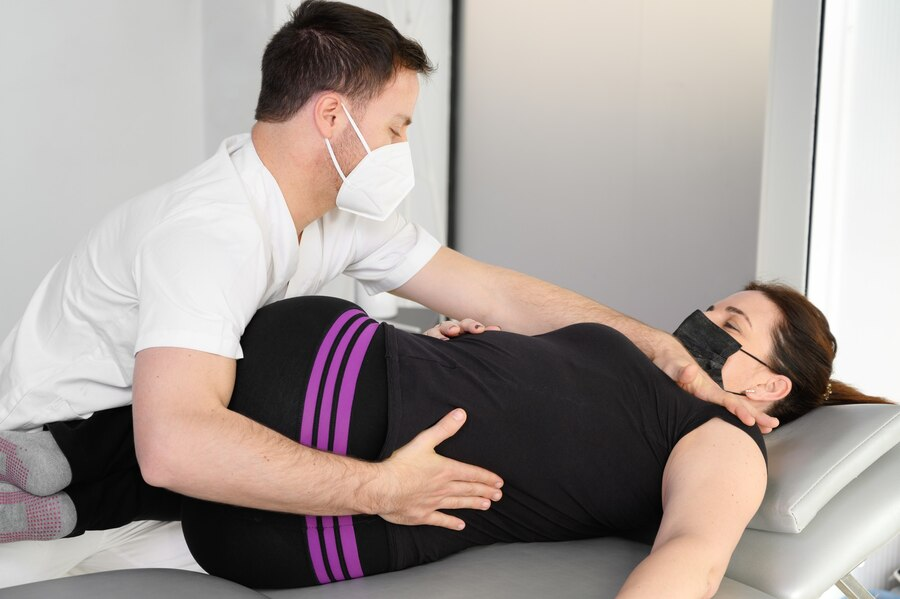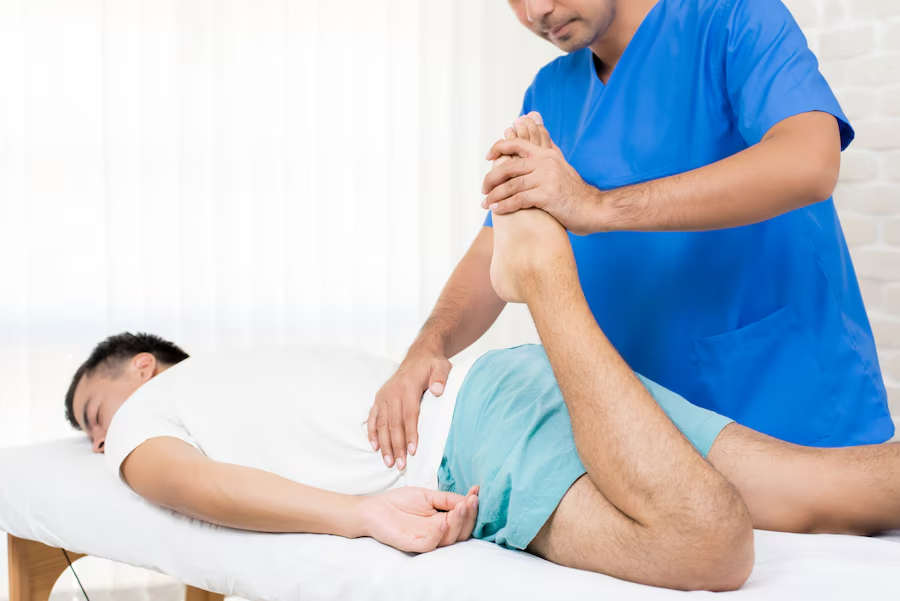In the journey toward better health and wellness, muscle recovery is a crucial aspect that often gets overlooked. Whether you’re an athlete pushing your limits, a busy professional dealing with chronic tension, or simply someone who wants to feel more comfortable in their body, understanding effective recovery methods can make a significant difference. One technique that’s gaining recognition for its effectiveness is Positional Release Therapy. In this blog, we’ll dive into what Positional Release is, how it works, and how it can enhance your muscle recovery.
What is Positional Release Therapy?
Positional Release Therapy (PRT) is a hands-on therapeutic technique used by physical therapists, chiropractors, and massage therapists to address muscle tension and pain. The core principle of PRT is to relieve muscle tightness and discomfort by placing the muscle in a specific, comfortable position. This position is known to reduce the muscle’s tension, allowing for improved recovery and relief from pain.
Unlike other techniques that might involve deep tissue work or forceful stretching, Positional Release Therapy focuses on gently positioning the muscle to facilitate relaxation and healing. The approach is based on the idea that by putting the muscle in a position of ease, you can reset its natural tone and alleviate pain.
How Does Positional Release Therapy Work?
The process of Positional Release Therapy is both simple and effective. Here’s a step-by-step breakdown of how it typically works:
Assessment
During the assessment phase, the therapist carefully evaluates the patient’s muscle tension and identifies areas of discomfort. This involves palpating the muscles to detect tight spots and discussing the patient’s symptoms, including any specific issues they’re experiencing. The therapist gathers detailed information about the patient’s pain patterns, daily activities, and overall health to tailor the therapy effectively.
Positioning
Once the problematic areas are pinpointed, the therapist positions the muscle in a way that reduces tension and discomfort. This “position of ease” is chosen to allow the muscle to relax as much as possible. The position is designed to alleviate stress on the muscle, enabling it to release accumulated tension and promote a more natural state of relaxation.
Hold and Release
In the hold and release phase, the muscle remains in the comfortable position for a predetermined period, usually between 90 seconds and a few minutes. During this time, the therapist might gently apply pressure or make slight adjustments to enhance the muscle’s relaxation. This step is crucial for allowing the muscle to reset its tone and achieve a state of reduced tension.
Reassessment
After the muscle has been held in the position of ease, the therapist performs a reassessment to evaluate changes in tension and comfort. The goal is to observe a noticeable reduction in muscle tightness and an improvement in the range of motion. The therapist checks how well the muscle has responded to the therapy and determines the next steps based on the observed changes.
Follow-Up
Following the session, the therapist provides recommendations for stretches, exercises, or lifestyle adjustments to maintain the benefits achieved through the therapy. These follow-up suggestions are tailored to the patient’s needs and aim to support continued improvement. Depending on the individual’s condition, regular therapy sessions may be recommended to sustain progress and prevent future issues.

Benefits of Positional Release Therapy
Pain Relief
One of the primary benefits of Positional Release Therapy is pain relief. By gently positioning the muscle to reduce tension, PRT helps to alleviate discomfort and pain. This is particularly useful for those suffering from chronic muscle pain or acute injuries.
Improved Muscle Function
When muscles are tight or in spasm, their function can be compromised. PRT helps to restore normal muscle function by addressing these issues and allowing the muscle to relax and return to its optimal state.
Enhanced Range of Motion
Muscle tightness often limits movement and flexibility. By relieving tension and improving muscle function, PRT can enhance the range of motion and make it easier to perform everyday activities and exercise.
Non-Invasive Approach
PRT is a non-invasive therapy, meaning it doesn’t involve surgery or medication. It relies on gentle positioning and manual techniques to achieve its effects, making it a safe and natural option for many individuals.
Personalized Treatment
Each therapy session is tailored to the individual’s needs and specific areas of discomfort. This personalized approach ensures that the therapy is as effective as possible in addressing the unique issues faced by the patient.
Who Can Benefit from Positional Release Therapy?
Positional Release Therapy can benefit a wide range of individuals, including:
Athletes
Athletes often experience muscle tension and soreness due to intense training and competition. PRT can help them recover more quickly, improve flexibility, and enhance overall performance.
Office Workers
Many office workers suffer from muscle tightness and discomfort due to prolonged sitting and poor posture. PRT can provide relief from back, neck, and shoulder pain commonly associated with desk jobs.
Seniors
As we age, muscle stiffness and joint discomfort can become more common. PRT can help seniors maintain mobility, reduce pain, and improve their overall quality of life.
Individuals with Chronic Pain
For those dealing with chronic pain conditions, PRT offers a gentle and effective way to manage symptoms and improve muscle function.
What to Expect During a Positional Release Therapy Session
If you’re considering Positional Release Therapy, here’s what you can typically expect during a session:
Initial Consultation
The therapist will start with a detailed consultation to understand your medical history, current symptoms, and specific concerns. This information helps tailor the therapy to your needs.
Assessment and Positioning
The therapist will assess your muscle tension and identify areas of discomfort. You will then be guided into a comfortable position that is designed to reduce tension in the targeted muscle.
Relaxation Period
The muscle will be held in this position for a few minutes, during which time you might feel a gradual release of tension and improvement in comfort. The therapist may apply gentle pressure or make slight adjustments to enhance the relaxation process.
Reassessment and Feedback
After the relaxation period, the therapist will reassess the muscle to gauge the effectiveness of the therapy. You’ll be asked about any changes in pain or discomfort, and the therapist may provide feedback or recommendations for ongoing care.
Tips for Maximizing the Benefits of Positional Release Therapy
To get the most out of Positional Release Therapy, consider these additional tips:
Stay Active
Regular physical activity can complement the benefits of PRT and help maintain muscle flexibility and strength. Incorporate exercises and stretches into your routine to support overall muscle health.
Practice Good Posture
Maintaining proper posture throughout the day can prevent muscle strain and support the effects of therapy. Pay attention to your sitting and standing posture, especially if you spend long hours at a desk.
Hydrate Well
Proper hydration is essential for muscle function and recovery. Drinking enough water helps keep your muscles supple and supports the healing process.
Follow Therapist’s Recommendations
Your therapist may provide specific recommendations for exercises or lifestyle changes to enhance the benefits of PRT. Following these recommendations can help you achieve better and longer-lasting results.
Elevate Your Recovery with the Power of Positional Release
Elevate your recovery journey with the transformative power of Positional Release Therapy. This innovative technique offers a gentle yet highly effective approach to alleviating muscle tension and discomfort. By placing muscles in a position of ease, Positional Release Therapy allows for deep relaxation and a reset of muscle tone, helping to relieve pain and enhance overall function.
Whether you’re an athlete recovering from intense training, someone dealing with chronic muscle tightness, or simply seeking to improve your muscle health, Positional Release Therapy can make a significant difference. Embrace this powerful method to experience improved mobility, reduced pain, and a more efficient path to recovery. Discover how Positional Release can be a game-changer for your muscle wellness today.
Conclusion
Positional Release Therapy offers a highly effective method for enhancing muscle recovery and alleviating pain. By gently positioning muscles to reduce tension, this technique promotes relaxation and improved function, making it ideal for athletes, individuals with chronic discomfort, and anyone seeking better muscle health. Integrative Chiropractic in Overland Park specializes in Positional Release Therapy, providing tailored solutions to address your specific needs. To explore how this therapy can benefit you and to schedule a consultation, contact Integrative Chiropractic at 913-451-7500. Experience the power of Positional Release and take a proactive step towards optimal muscle recovery and overall well-being.

